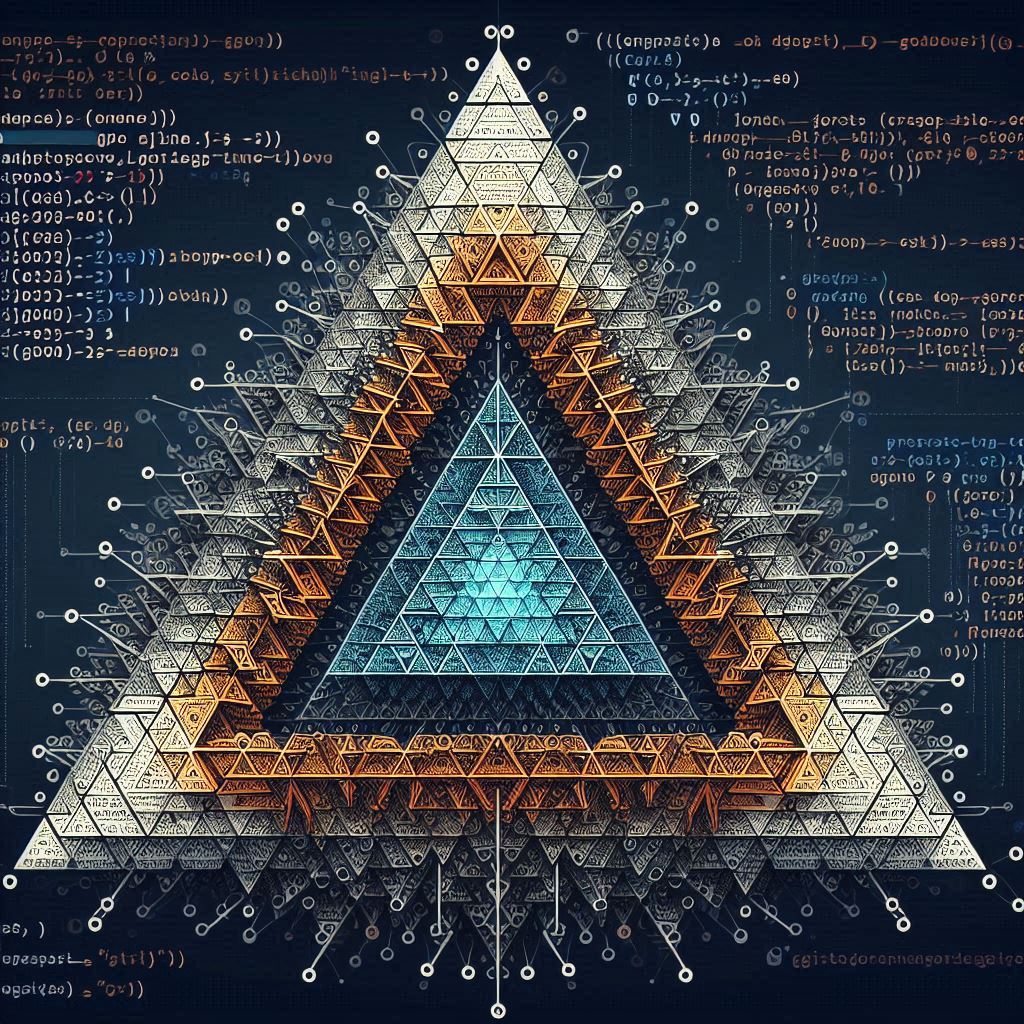The Sierpinski Triangle is a well-known fractal that exhibits self-similarity, meaning it looks the same at different scales. This pattern is formed by recursively subdividing an equilateral triangle into smaller triangles. In this blog post, we'll explore how to generate a Sierpinski Triangle using the Go programming language.
Understanding the Sierpinski Triangle
The Sierpinski Triangle starts with a single equilateral triangle. This triangle is subdivided into four smaller equilateral triangles, and the central triangle is removed. This process is repeated recursively for the remaining triangles. The result is a fractal pattern that is infinitely complex, yet can be described with a simple recursive algorithm.
Why Use Go?
Go, also known as Golang, is a modern programming language designed for simplicity and efficiency. It is particularly well-suited for concurrent programming and has a rich standard library. Using Go to generate the Sierpinski Triangle allows us to leverage its straightforward syntax and powerful features.
Generating the Sierpinski Triangle in Go
We will use a simple console-based approach to generate and display the Sierpinski Triangle. Below is the Go code to create this fractal pattern:
package main
import (
"fmt"
"strings"
"unicode/utf8"
)
func main() {
var order = 4
var star = "*"
t := []string{star + strings.Repeat(" ", utf8.RuneCountInString(star))}
for ; order > 0; order-- {
sp := strings.Repeat(" ", utf8.RuneCountInString(t[0])/2)
top := make([]string, len(t))
for i, s := range t {
top[i] = sp + s + sp
t[i] += s
}
t = append(top, t...)
}
for _, r := range t {
fmt.Println(r)
}
}output
*
* *
* *
* * * *
* *
* * * *
* * * *
* * * * * * * *
* *
* * * *
* * * *
* * * * * * * *
* * * *
* * * * * * * *
* * * * * * * *
* * * * * * * * * * * * * * * * Run code on Go PlayGround
Code Explanation
Let's break down the code to understand how it generates the Sierpinski Triangle.
-
Imports and Initialization:
import ( "fmt" "strings" "unicode/utf8" )We import the necessary packages. The
fmtpackage is used for printing,stringsfor string manipulation, andunicode/utf8for counting runes in a string. -
Main Function:
func main() { var order = 4 var star = "*"We define the order of the triangle, which determines the depth of recursion, and the character used to draw the triangle (
star). -
Initial Triangle Setup:
t := []string{star + strings.Repeat(" ", utf8.RuneCountInString(star))}We initialize the first row of the triangle with a single star followed by spaces.
-
Generating the Triangle:
for ; order > 0; order-- { sp := strings.Repeat(" ", utf8.RuneCountInString(t[0])/2) top := make([]string, len(t)) for i, s := range t { top[i] = sp + s + sp t[i] += s } t = append(top, t...) }The loop runs for the specified order, generating the triangle. For each iteration:
- We calculate the spaces needed to center-align the current rows (
sp). - Create a copy of the current rows (
top) and update them to include spaces on both sides. - Update the original rows (
t) by duplicating the pattern. - Append the modified rows (
top) totto create the next level of the triangle.
- We calculate the spaces needed to center-align the current rows (
-
Printing the Triangle:
for _, r := range t { fmt.Println(r) }Finally, we print each row of the triangle.
Running the Code
To run the code, save it to a file named main.go and execute the following commands in your terminal:
go run main.goYou should see an output resembling a Sierpinski Triangle, depending on the specified order.
Conclusion
Creating a Sierpinski Triangle in Go is a great way to explore recursive algorithms and understand how fractals work. Go's simplicity and performance make it an excellent choice for such tasks. This code provides a basic but powerful demonstration of generating fractal patterns using recursion. Feel free to experiment with different orders and characters to create your unique fractal art. Happy coding!
